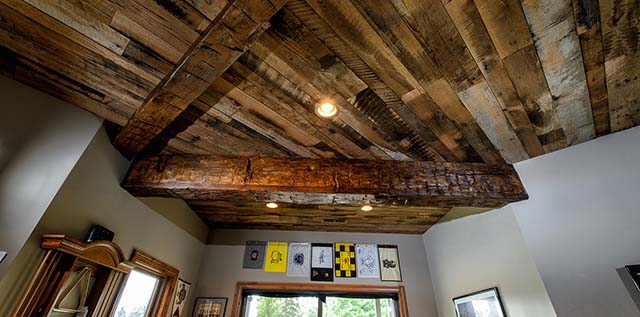
How They Hewed It
Most are familiar with the rustic look of hand-hewn timbers. Touching the axe-marked texture of these archaic beams takes us back in time, as we imagine the craftsman's hands that shaped the log so long ago.
We intuitively know the process involved an axe of some kind, but how exactly did it work?
First came the careful selection of which tree would be turned into a timber. The timber-framer would seek out the straightest tree with a thickness that would most readily yield the desired beam. Eight-inch by eight-inch and ten-inch by ten-inch were commonly sought dimensions of a finished hewn beam.
Once the tree-to-be-hewn was selected, it was chopped down with a felling-axe and skidded on two smaller logs to raise it off the ground. Sometimes, if they were available, the log would be held in place by simple iron braces known as "timber dogs."
Then the transformation began.
The log would first be marked, often by snapping a rudimentary chalk-line, to delineate the desired dimensions. Next, the craftsman would stand on top of the log and score it every one or two feet by using his felling axe to cut a small wedge into the log at the depth of the chalk line.
Once this was complete, the craftsman would straddle the log and use a large flat axe known as a broad-axe to hew off the outer sections of tree in between each score. This process was called "joggling" the log. The log was then turned, and the process repeated until the craftsman had squared the beam.
Today this amazing craftsmanship can be still seen in standing historic structures and in reclaimed design elements such as hand-hewn beams, timbers, and fireplace mantels. When reclaimed hand-hewn timbers are no longer structurally viable, they are often re-sawn into rustic yet clean wide plank flooring.